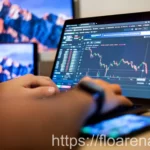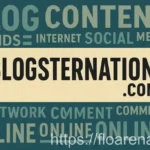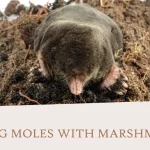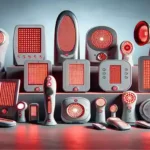You see WTW in texts and chats. You wonder what it means. This guide explains everything about WTW. You will learn all its meanings and uses. WTW appears everywhere on social media. People use it in different ways. Knowing what WTW means helps you chat better. You can join conversations with confidence.
What Does WTW Mean? Top 5 Meanings

WTW has many meanings. The meaning changes based on where you see it. Here are the most common ones.
1. What’s the Word?
This is the most popular meaning of WTW. People say this to ask:
- How are you?
- What are you doing?
- Any news?
- What’s up?
- How is life?
Friends text WTW to start talking. They want to know about your day. It’s a friendly way to begin a chat.
2. What the What?
People use WTW to show surprise. This means:
- That’s shocking
- I can’t believe it
- So unexpected
- That’s crazy
- Really strange
You use this when something weird happens. It’s a nice way to say you’re surprised. No bad words needed.
3. Walk the Walk
Some people use WTW to mean actions matter. This shows:
- Do what you say
- Prove your words
- Actions are important
- Show don’t tell
- Be real about it
This meaning talks about being honest. You don’t just talk. You do things too.
4. Worth the Wait
WTW can mean something good came after waiting. This shows:
- Waiting paid off
- Good things come to those who wait
- It was worth it
- Better late than never
- Quality takes time
People use this for delayed good news. Or when something late turns out great.
5. What to Watch
On entertainment sites, WTW means what to watch. This helps with:
- Movie suggestions
- TV show ideas
- Video recommendations
- Streaming choices
- Entertainment options
People share viewing ideas this way. They help others find good content.
Where People Use WTW
WTW appears in many places. Each place might use it differently. Here’s where you’ll see it most.
Text Messages Between Friends
Friends text WTW all the time. They use it to:
- Say hello
- Start conversations
- Check on each other
- Ask about plans
- Break silence
Most texts using WTW mean “What’s the Word?”
Instagram Messages and Comments
Instagram users post WTW in:
- Direct messages
- Photo comments
- Story replies
- Friend chats
- Group messages
Young people love using WTW on Instagram. It keeps messages short and fun.
Snapchat Daily Chats
Snapchat friends use WTW for:
- Starting snap conversations
- Daily check-ins
- Casual hellos
- Keeping streaks going
- Quick messages
The Snapchat makes WTW very popular. The app is perfect for short messages.
TikTok Comments and Messages
TikTok users write WTW in:
- Video comments
- Direct messages
- Reply threads
- Creator interactions
- Friend chats
What to Watch with WTW. They ask for video suggestions.
Twitter Conversations
Twitter users type WTW in:
- Reply tweets
- Direct messages
- Thread discussions
- Casual interactions
- Community chats
Twitter’s character limit makes WTW useful. It saves space in tweets.
Gaming Chat Rooms
Gamers use WTW to mean:
- Team status checks
- Proving gaming skills
- Waiting for game updates
- Finding new games to play
- Starting team conversations
Gaming communities love short messages. WTW fits perfectly.
How to Answer When Someone Says WTW
Knowing how to reply to WTW is important. Your answer depends on what they mean.
Answering “What’s the Word?”
Good replies include:
- “Just relaxing at home”
- “Working on homework”
- “Having a great day”
- “Nothing much, you?”
- “Just finished eating”
- “Watching some TV”
- “Playing video games”
- “Hanging with friends”
Keep your answer simple and friendly.
Answering “What the What?”
Good responses are:
- “I know, right?”
- “So weird”
- “Totally crazy”
- “My thoughts exactly”
- “Can’t believe it”
- “So shocking”
- “That’s insane”
- “Completely unexpected”
Match their surprise level in your reply.
Answering “Walk the Walk”
You can reply with:
- “Actions speak loudest”
- “I’ll prove it”
- “Watch me do it”
- “Results matter most”
- “Time to show up”
- “Let’s see action”
- “Doing beats talking”
- “Proof is coming”
Show you understand the challenge.
Answering “Worth the Wait”
Great responses include:
- “Totally worth it”
- “Patience paid off”
- “Good things take time”
- “Quality over speed”
- “Best things are delayed”
- “Worth every second”
- “Perfect timing now”
- “Glad we waited”
Agree that waiting made sense.
Answering “What to Watch”
You can suggest:
- “Try this new show”
- “Great movie on Netflix”
- “Check out this channel”
- “Found a cool series”
- “This documentary is good”
- “Funny videos on TikTok”
- “New season just dropped”
- “Classic movie night?”
Give specific viewing ideas.
How to Know Which WTW Meaning They Use
WTW has many meanings. You need clues to understand which one. Here’s how to figure it out.
Check the Time They Sent It
Time gives you hints:
- Morning WTW usually means “What’s the Word?”
- After shocking news means “What the What?”
- During work discussions might mean “Walk the Walk”
- After delays could mean “Worth the Wait”
- Evening messages might ask “What to Watch”
Look at Past Messages
Previous chats help you understand:
- Casual talks suggest “What’s the Word?”
- Surprised conversations point to “What the What?”
- Achievement talks indicate “Walk the Walk”
- Waiting discussions mean “Worth the Wait”
- Entertainment chats suggest “What to Watch”
Consider the App or Website
Different places prefer different meanings:
- Personal texts: Usually “What’s the Word?”
- Social media: Often “What the What?”
- Work apps: Might be “Walk the Walk”
- Entertainment sites: Could be “What to Watch”
- Gaming platforms: Various meanings possible
Think About Your Relationship
Who sent it matters:
- Close friends: Likely “What’s the Word?”
- Surprised people: Probably “What the What?”
- Work contacts: Possibly “Walk the Walk”
- Movie buddies: Maybe “What to Watch”
WTW vs Other Text Shortcuts
WTW is similar to other shortcuts. But they have differences. Here’s how they compare.
WTW vs WYD
Key differences:
- WTW asks general questions or shows surprise
- WYD asks what you’re doing right now
- WTW is broader and more flexible
- WYD wants specific current activities
WTW vs SUP
Main differences:
- WTW has multiple meanings
- SUP almost always means “What’s up?”
- WTW can show emotions like surprise
- SUP is just a simple greeting
WTW vs HRU
Important points:
- WTW starts conversations many ways
- HRU specifically asks “How are you?”
- WTW can mean surprise or action
- HRU focuses only on your well-being
WTW vs WBU
Key points:
- WTW begins new conversations
- WBU continues existing conversations
- WTW works alone as a message
- WBU needs previous context to make sense
When to Use WTW the Right Way
Using WTW correctly helps you communicate better. Here’s when and how to use it.
Good Times to Use WTW
Use WTW when you want to:
- Start friendly conversations
- Show mild surprise
- Check on friends you haven’t talked to
- Emphasize that actions matter
- Say something was worth waiting for
- Ask for entertainment suggestions
Places Where WTW Works Well
WTW fits great in:
- Casual friend chats
- Social media comments
- Gaming conversations
- Entertainment discussions
- Informal group messages
- Daily check-in texts
When to Avoid WTW
Don’t use WTW in:
- Very formal business emails
- Important school assignments
- Official documents
- Serious conversations about problems
- First meetings with new people
- Professional job interviews
Making WTW Sound Natural
To use WTW well:
- Match the conversation tone
- Consider who you’re talking to
- Think about the platform you’re using
- Make sure the timing feels right
- Don’t overuse it in every message
Common Mistakes People Make with WTW
Learning from mistakes helps you use WTW better. Here are problems to avoid.
Assuming It Always Means One Thing
Many people think WTW only means “What’s the Word?” This causes problems:
- You might miss when someone is surprised
- You could ignore calls for action
- You might not understand entertainment requests
- Your replies might not match their meaning
Using It Too Much
Overusing WTW creates issues:
- People get tired of seeing it
- Your messages become boring
- You seem like you can’t think of other words
- Conversations feel repetitive
Wrong Platform Usage
Using WTW incorrectly on different platforms:
- Professional sites need more formal language
- Entertainment platforms expect “What to Watch”
- Gaming sites might expect action meanings
- Social platforms usually mean greetings
Not Reading the Situation
Missing context clues leads to:
- Awkward responses
- Misunderstood conversations
- Confused friends
- Missed opportunities to connect
Age Groups and How They Use WTW
Different ages use WTW differently. Understanding this helps you communicate better.
Teenagers Use WTW For
Teens love using WTW to:
- Greet friends casually
- Show surprise about school events
- Plan weekend activities
- Start social media conversations
- Express emotions quickly
Young Adults Prefer WTW When
College students and young workers use WTW for:
- Casual work conversations
- Weekend planning with friends
- Dating app messages
- Social media interactions
- Quick family check-ins
Adults Use WTW Less But For
Grown-ups might use WTW to:
- Connect with younger family members
- Understand kids’ messages
- Try modern communication styles
- Keep up with social media trends
- Show they understand current slang
Older People Need Help With WTW
Seniors often:
- Don’t know what WTW means
- Prefer full sentences
- Need explanations for shortcuts
- Feel confused by multiple meanings
- Appreciate patience when learning
WTW Around the World
WTW usage changes in different countries and cultures. Here’s what to know.
English-Speaking Countries
In the US, UK, Canada, and Australia:
- WTW is widely understood
- “What’s the Word?” is the most common meaning
- Social media usage is similar
- Gaming communities use it frequently
Non-English Speaking Countries
In countries where English isn’t the first language:
- People might not know WTW meanings
- Translation apps might not help
- Local slang might be preferred
- Younger people understand it better
Cultural Differences
Different cultures might:
- Prefer formal communication
- Use different social media platforms
- Have their own shortcuts and slang
- Need more explanation of meanings
How WTW Changed Over Time
WTW didn’t start recently. It grew popular as technology changed.
Early Text Message Days
When texting started:
- Character limits made shortcuts necessary
- People created many abbreviations
- WTW emerged as a useful greeting
- Young people adopted it quickly
Social Media Growth
As social media grew:
- WTW spread to different platforms
- New meanings developed
- More people started using it
- Different communities preferred different meanings
Smartphone Era
With smartphones:
- Typing became easier
- But shortcuts stayed popular
- WTW remained useful
- New meanings kept appearing
Current Usage
Today WTW:
- Has multiple accepted meanings
- Works across many platforms
- Continues growing in popularity
- Adapts to new communication styles
Tips for Getting Good at Using WTW
Practice makes perfect with WTW. Here’s how to improve.
Study Context Clues
Get better at reading situations:
- Notice what platform you’re on
- Consider who sent the message
- Look at previous conversation topics
- Think about the timing
- Pay attention to other words used
Practice Different Responses
Try various reply styles:
- Match the energy of the original message
- Consider what response they expect
- Be genuine in your communication
- Keep responses conversational and friendly
- Don’t be afraid to ask for clarification
Learn from Others
Watch how people use WTW:
- Notice patterns in friend groups
- See how different ages use it
- Observe platform-specific usage
- Learn from successful conversations
- Ask friends about meanings when unsure
Stay Updated
Keep learning about WTW:
- New meanings might develop
- Platform usage might change
- Cultural trends affect communication
- Generational preferences shift
- Technology influences language
Fun Facts About WTW
Here are interesting things about WTW that many people don’t know.
WTW Popularity Stats
WTW usage facts:
- Most popular among 13-25 year olds
- Used millions of times daily
- Instagram and Snapchat are top platforms
- “What’s the Word?” is 70% of usage
- Gaming communities use it frequently
Surprising WTW Uses
WTW appears in unexpected places:
- Business casual conversations
- Family group chats
- Educational apps
- Dating profiles
- Customer service chats
in Pop Culture
WTW shows up in:
- Song lyrics by young artists
- TikTok viral videos
- Memes and funny posts
- TV shows about teenagers
- Movie dialogue
Building Better Communication with WTW
WTW is just one tool for good communication. Here’s how to use it as part of better chatting.
Balance Shortcuts with Clear Communication
Good communication needs:
- Some shortcuts like WTW for efficiency
- Full sentences when clarity matters
- Matching the other person’s style
- Considering the importance of the topic
- Thinking about who you’re talking to
Reading People and Situations
Successful communication requires:
- Understanding context clues
- Recognizing when people are confused
- Adapting your style to others
- Being patient with different generations
- Explaining when necessary
Growing Your Communication Skills
Keep improving by:
- Learning new terms and meanings
- Practicing with different people
- Asking questions when confused
- Staying open to new communication styles
- Balancing modern and traditional approaches
Conclusion
WTW is a helpful shortcut in modern texting. Understanding what WTW means improves your conversations. What’s the Word? is the most common meaning. Context helps you understand which meaning applies. Different apps and age groups use WTW differently. Practice reading situations and responding appropriately. Whether WTW means greeting, surprise, or action, good communication connects people meaningfully.






